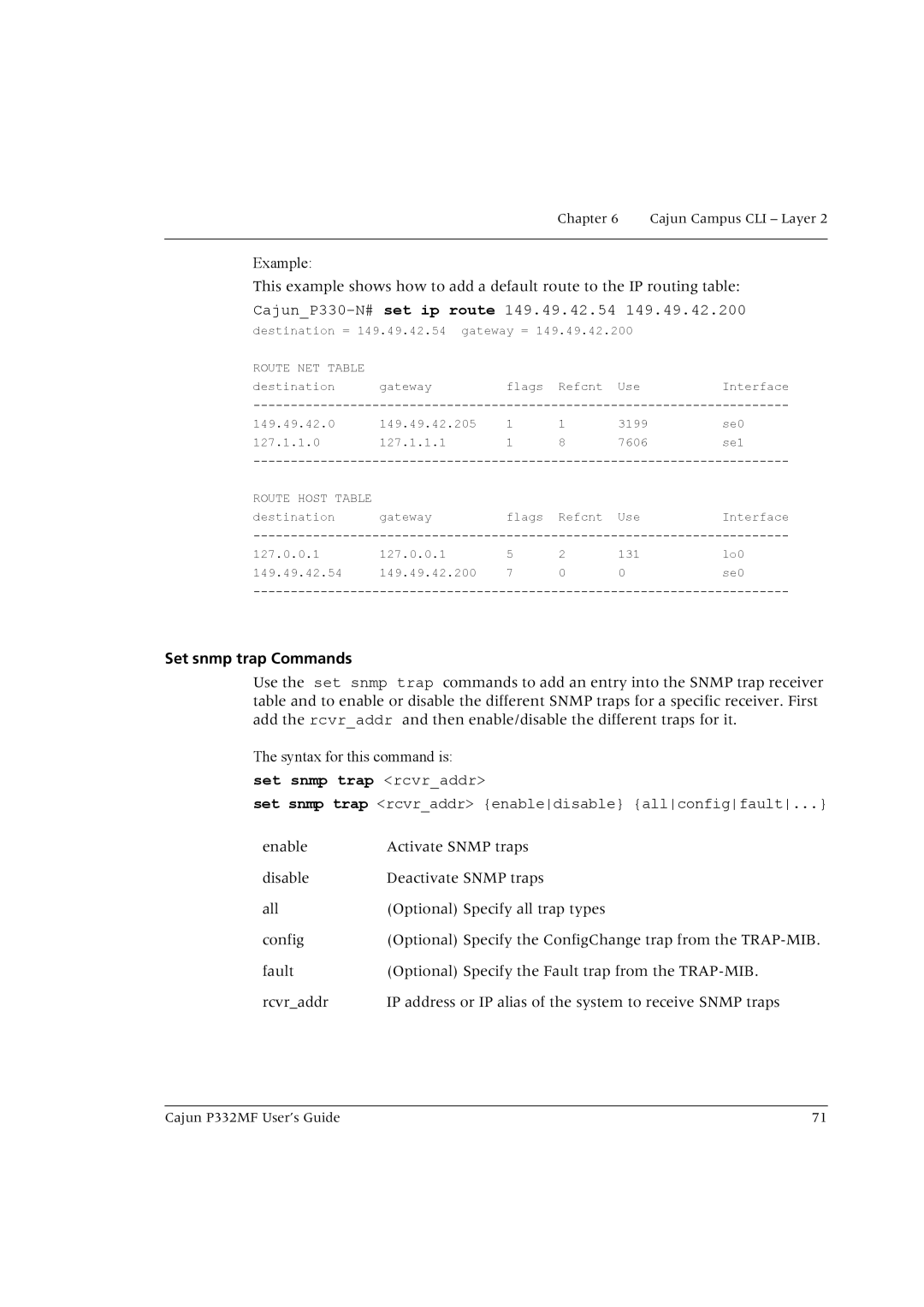
Chapter 6 Cajun Campus CLI – Layer 2
Example:
This example shows how to add a default route to the IP routing table:
Cajun_P330-N# set ip route 149.49.42.54 149.49.42.200
destination = 149.49.42.54 gateway = 149.49.42.200
ROUTE NET TABLE |
|
|
|
destination | gateway | flags Refcnt Use | Interface |
149.49.42.0 | 149.49.42.205 | 1 | 1 | 3199 | se0 |
127.1.1.0 | 127.1.1.1 | 1 | 8 | 7606 | se1 |
ROUTE HOST TABLE |
|
|
|
destination | gateway | flags Refcnt Use | Interface |
127.0.0.1 | 127.0.0.1 | 5 | 2 | 131 | lo0 |
149.49.42.54 | 149.49.42.200 | 7 | 0 | 0 | se0 |
Set snmp trap Commands
Use the set snmp trap commands to add an entry into the SNMP trap receiver table and to enable or disable the different SNMP traps for a specific receiver. First add the rcvr_addr and then enable/disable the different traps for it.
The syntax for this command is:
set snmp trap <rcvr_addr>
set snmp trap <rcvr_addr> {enabledisable} {allconfigfault...}
enable | Activate SNMP traps |
disable | Deactivate SNMP traps |
all | (Optional) Specify all trap types |
config | (Optional) Specify the ConfigChange trap from the |
fault | (Optional) Specify the Fault trap from the |
rcvr_addr | IP address or IP alias of the system to receive SNMP traps |
Cajun P332MF User’s Guide | 71 |
